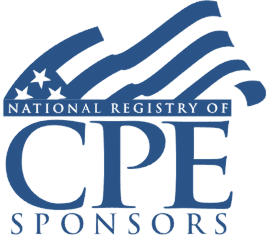Welcome! Save 30% on all CLE, CPE, and Professional Skills webinars, plus 15% off any annual pass with code HOLIDAY25
About the Course
Introduction
This webinar will take an in-depth look at the categories of income reported on Form 1118 for the foreign tax credit (FTC). Our knowledgeable panel will explain how these baskets influence the ultimate calculation of the FTC, the allocation and apportionment of expenses by category, carryovers and carrybacks, and the impact of OBBBA on these baskets.
Description
The FTC should prevent double taxation on income already taxed by another country. The FTC can only be applied to foreign income within the same statutory category. Form 1118 contains many baskets for separating income:
- 951A—GILTI
- Foreign branch
- Passive
- General
- 901(j)
- Income resourced by treaty
Once income is distributed by basket, deductions must be allocated and apportioned to each category.
OBBBA modifications require foreign taxpayers to revisit these complex calculations. The rate for the deemed paid foreign tax credit for NCTI/GILTI increased from 80% to 90%. The sourcing rule for inventory includes products produced in the U.S. and sold through a foreign branch. And the 163(j) interest limitation is again calculated on EBIT (earnings before interest and taxes), excluding depreciation and amortization deductions from the calculation, rather than EBITDA. Tax advisers need to understand the implications of these changes on FTC income and categories to maximize this credit.
Listen as our panel of international tax experts details the composition of each foreign income basket, OBBBA legislation affecting income and expenses classification, and how categorization affects the utilization of this valuable credit.
Presented By

Mr. Brakefield is a Senior Manager, International Tax at BDO USA. He has experience working with international tax law and regulations, mergers and acquisitions, private equity, Subchapter C, and partnership taxation. Mr. Brakefield is a strong business development professional with an LLM focused in Taxation from New York University School of Law and a JD/MBA from the University of Richmond.

Mr. Feinstein has over 30 years of experience in advising multinational companies and large privately held companies on domestic and international mergers and acquisitions and other business transactions, structuring of international operations (including tax efficient supply chains), financial products, and foreign currency transactions, as well as on other tax matters. His clients have included companies in the manufacturing, pharmaceuticals, specialty chemicals, and financial services industries, among other industries. Mr. Feinstein joined BDO in November 2022 after retiring as a managing director from Deloitte Tax LLP in 2020. Prior to joining Deloitte in 1996, he was partner in the law firm of Duane, Morris & Heckscher and in the law firm of Zapruder & Odell. Mr. Feinstein began his career as a tax associate at the law firm of Morgan, Lewis & Bockius.

Ms. Ippolito has over 15 years of experience in taxation, which includes over 12 years of public accounting experience providing international tax consulting and compliance services to multinational public and private companies. As part of BDO’s National Tax Office, she specializes in providing international tax consulting services to U.S. and foreign multinationals, including teaming with BDO's International Tax Services team, nationally, to help clients navigate international tax calculations and filings required under the Tax Cuts and Jobs Act, group reorganizations and restructurings, international mergers and acquisitions and due diligence, identifying international tax planning opportunities, managing internal and external risk, as well as monitoring pending U.S. international tax legislation.
-
BARBRI is a NASBA CPE sponsor and this 110-minute webinar is accredited for 2.0 CPE credits.
-
BARBRI is an IRS-approved continuing education provider offering certified courses for Enrolled Agents (EA) and Tax Return Preparers (RTRP).
Date + Time
- event
Monday, December 1, 2025
- schedule
1:00 p.m. ET./10:00 a.m. PT
I. Foreign tax credit baskets
II. 951A—GILTI
III. Foreign branch
IV. Passive
V. General
VI. 901(j)
VII. Income resourced by treaty
VIII. OBBBA legislation
IX. Allocating and apportioning expenses
X. Planning to maximize FTCs
The panel will cover these and other critical issues:
- Income allocation planning to preserve FTCs
- The impact of OBBBA on FTC calculations
- Allocating and apportioning expenses by branch
- Reporting income resourced by treaty
Learning Objectives
After completing this course, you will be able to:
- Understand the categories of income reported on Form 1118 for the FTC
- Differentiate between allocating and apportioning expenses
- Identify baskets of income
- Ascertain how OBBBA affects FTC calculations
- Recognize how the U.S. foreign tax reporting regime is structured
- Establish interest and other expense allocations
- Field of Study: Taxes
- Level of Knowledge: Intermediate
- Advance Preparation: None
- Teaching Method: Seminar/Lecture
- Delivery Method: Group-Internet (via computer)
- Attendance Monitoring Method: Attendance is monitored electronically via a participant's PIN and through a series of attendance verification prompts displayed throughout the program
- Prerequisite:
Three years+ business or public firm experience preparing complex tax forms and schedules, supervising other preparers or accountants. Specific knowledge and understanding of international taxation including residency determination, foreign entity classifications, application of treaty benefits, as well as GILTI, Subpart F, and the related Section 250 deductions.

BARBRI, Inc. is registered with the National Association of State Boards of Accountancy (NASBA) as a sponsor of continuing professional education on the National Registry of CPE Sponsors. State boards of Accountancy have final authority on the acceptance of individual courses for CPE Credits. Complaints regarding registered sponsons may be submitted to NASBA through its website: www.nasbaregistry.org.

BARBRI is an IRS-approved continuing education provider offering certified courses for Enrolled Agents (EA) and Tax Return Preparers (RTRP).

BARBRI CE webinars-powered by Barbri-are backed by our 100% unconditional money-back guarantee: If you are not satisfied with any of our products, simply let us know and get a full refund. Contact us at 1-800-926-7926 .
Unlimited access to premium CLE courses:
- Annual access
- Available live and on-demand
- Best for attorneys and legal professionals
Unlimited access to premium CPE courses.:
- Annual access
- Available live and on-demand
- Best for CPAs and tax professionals
Unlimited access to premium CLE, CPE, Professional Skills and Practice-Ready courses.:
- Annual access
- Available live and on-demand
- Best for legal, accounting, and tax professionals
Unlimited access to Professional Skills and Practice-Ready courses:
- Annual access
- Available on-demand
- Best for new attorneys
Related Courses

Partnership Terminations: Sale or Abandonment of an Interest, Retirement or Death of Partner, and Closing the Entity
Wednesday, February 18, 2026
1:00 p.m. ET./10:00 a.m. PT

UK-Based Retirement Accounts for U.S. Taxpayers: Mastering Reporting, Maximizing Planning Opportunities
Tuesday, January 27, 2026
1:00 p.m. ET./10:00 a.m. PT

Tax Research Techniques: Internet Tools, AI Caveats, Methodology, Documentation and Communication of Results
Wednesday, January 21, 2026
1:00 p.m. ET./10:00 a.m. PT

The Impact of OBBBA on Trusts and Estates: New Planning Opportunities
Monday, January 26, 2026
1:00 p.m. ET./10:00 a.m. PT
Recommended Resources

How CPE Can Bridge the Gap Between What You Know and What You Need to Know
- Career Advancement


